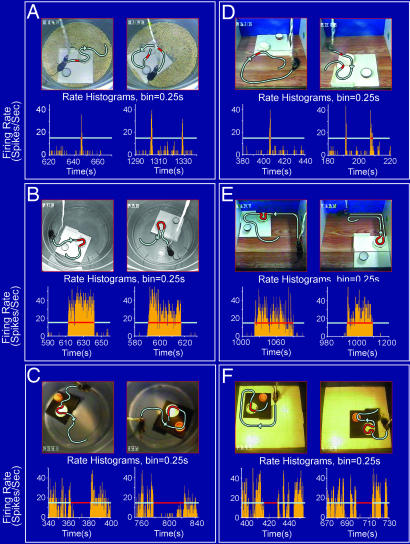Fig. 2.
Firing changes of nest-responsive cells are independent of the nest's spatial locations and environments. (A) Cell #1 of mouse A fired robustly upon encountering the nest regardless of the nest's locations as indicated by the firing-rate histograms beneath each video snapshot. The gray lines illustrate the animal's movement path; the red segments show the near contact points where the mouse crossed the edge of the nests. (B) Cell #2 from mouse B showed a persistent increase in its firing upon entry into the nest regardless of the fact that the nest was placed at different locations in the home environment. (C) Cell #3 of mouse C ceased to fire once the mouse entered the nest regardless of the fact that the nest was placed at different locations. (D) Cell #1 preserved its robust responsiveness to the nest after it was relocated to two different locations in this new environment. The gray lines illustrate the animal's movement paths, and the red segments show the near contact points right before the mouse's nose crossed the edge of the nests. (E) Cell #2 continued to exhibit persistent-on-type firing even after the nest was relocated to two different locations in this new environment. (F) Cell #3 ceased to fire once the mouse entered the nest, which was placed in two different locations in a new environment. For B, C, E, and F, the gray lines illustrate the animal's movement paths, and the red segments indicate the time duration in which the mouse was inside the nest. The time bin used in the firing-rate histograms is 250 ms.

